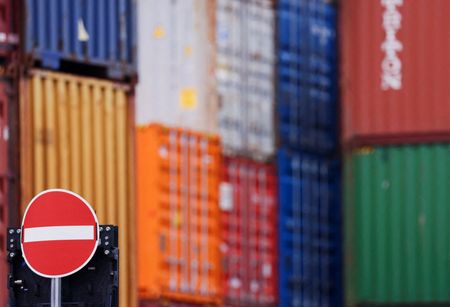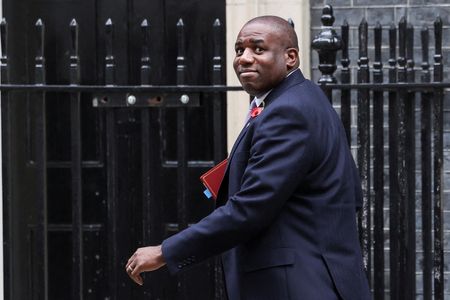BRUSSELS (Reuters) -A growing number of European Union member states, including Germany, are considering using wide-ranging “anti-coercion” measures targeting U.S. services if the EU cannot reach a trade deal with U.S. President Donald Trump, EU diplomats say.
Here are details of the bloc’s Anti-Coercion Instrument, which took effect at the end of 2023 and hitherto has never been used, as it is seen by many as a “nuclear option” that is ideally meant as a deterrent.
POSSIBLE MEASURES
The ACI allows the 27-nation EU to retaliate against third countries that put economic pressure on member countries to change their policies, and offers far wider scope for action than just counter-tariffs on U.S. exports.
The ACI has a 10-point list of possible measures against Trump’s threat of a 30% tariff on EU imports by August 1.
As well as tariffs on goods, the ACI tools include curbs on imports or exports of goods such as through quotas or licences.
For public tenders in the bloc, worth some 2 trillion euros ($2.3 trillion) per year, there are two possibilities. Bids, such as for construction or defence procurement, could be excluded if U.S. goods or services make up more than 50% of the potential contract. Alternatively, a penalty score adjustment could be attached to U.S. bids.
The ACI could also lead to measures to affect services in which the U.S. has a trade surplus with the EU, including from digital services providers Amazon, Microsoft, Netflix or Uber.
Measures could also curb foreign direct investment from the United States, which is the world’s largest investor in the EU.
Further measures could include restrictions on protection of intellectual property rights, on access to financial services markets and on the ability to sell chemicals or food in the EU.
The EU is supposed to select measures that are likely to be most effective to stop the coercive behaviour of a third country and potentially to repair injury.
HOW DOES THE EU INVOKE THE ACI?
The ACI was proposed in 2021 as a response to EU member criticism that the first Trump administration and China had used trade as a political tool. China had targeted Lithuania, according to Lithuanian officials, after it allowed Taiwan to set up a de facto embassy in Vilnius.
The law gives the European Commission up to four months to examine possible cases of coercion. If it finds a foreign country’s measures constitute coercion, it puts this to EU members, which have another eight to 10 weeks to confirm the finding.
To confirm, a qualified majority of EU members is required – a higher bar to hurdle than for applying retaliatory tariffs.
The Commission would normally then consult with the foreign country in an effort to stop the coercion. If that fails, then within six months it can adopt EU response measures, again subject to a vote by EU members. These should enter force within three months.
The whole process could take a year, but could be sped up.
($1 = 0.8578 euros)
(Reporting by Philip Blenkinsop; editing by Mark Heinrich)










